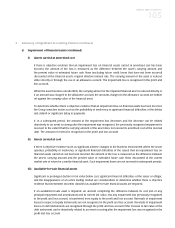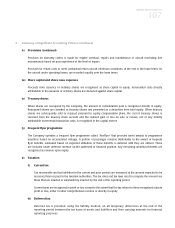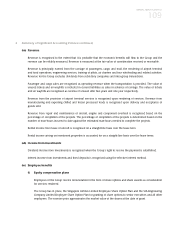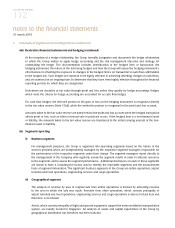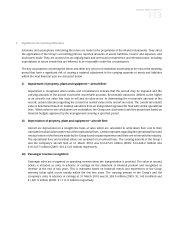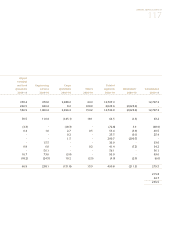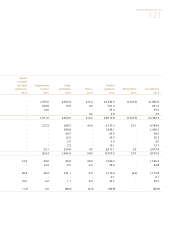Singapore Airlines 2010 Annual Report Download - page 113
Download and view the complete annual report
Please find page 113 of the 2010 Singapore Airlines annual report below. You can navigate through the pages in the report by either clicking on the pages listed below, or by using the keyword search tool below to find specific information within the annual report.ANNUAL REPORT 2009/10
111
2 Summary of Significant Accounting Policies (continued)
(ad) Aircraft maintenance and overhaul costs
The Group recognises aircraft maintenance and overhaul expenses (except heavy maintenance visits and
engine overhaul expenses) on an incurred basis. For engine overhaul costs covered by power-by-hour third-
party maintenance agreements, a portion of the cost is expensed at a fixed rate per hour during the terms of
the agreements.
(ae) Training and development costs
Training and development costs, including start-up programme costs, are charged to the profit and loss account in
the financial year in which they are incurred.
(af) Borrowing costs
Borrowing costs incurred to finance advance and progress payments for aircraft are capitalised as part of advance
and progress payments until the aircraft are commissioned for operation or the projects are completed. All other
borrowing costs are recognised as finance charges in the period in which they are incurred.
(ag) Claims and liquidated damages
Claims for liquidated damages, in relation to a loss of income, are recognised in the profit and loss account when a
contractual entitlement exists, the amount can be reliably measured and receipt is virtually certain. When the claims
do not relate to a compensation for loss of income, the amounts are taken to the statement of financial position
as deferred credit, included under deferred account, as a reduction to the cost of the assets when the assets are
capitalised and also for future reduction of operating lease expenses.
(ah) Derivative financial instruments and hedging
The Group uses derivative financial instruments such as forward currency contracts, foreign currency option contracts,
cross currency swap contracts, interest rate swap contracts, interest rate cap contracts, jet fuel option contracts, jet fuel
swap contracts, gasoil swap contracts and regrade swap contracts to hedge its risks associated with foreign currency,
interest rate and jet fuel price fluctuations. Such derivative financial instruments are initially recognised at fair value
on the date on which a derivative contract is entered into, and are subsequently re-measured at fair value.
Any gains or losses arising from changes in fair value on derivatives that do not qualify for hedge accounting are
taken directly to the profit and loss account.
The Group also set aside USD deposits to match forecast capital expenditure requirements. To create a USD
denominated asset in the statement of financial position to match against the expected USD liability for capital
expenditure, the Group accumulates USD over a period of 10 months in advance of forecast aircraft payments.
The exchange gains and losses of the USD held would be recognised in the carrying value of the aircraft.






